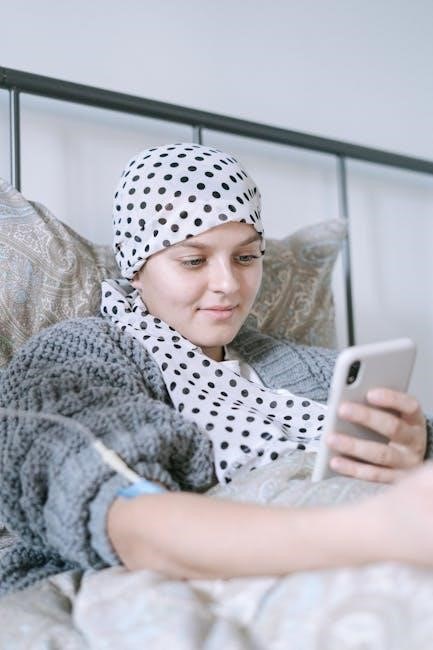
Hip ORIF physical therapy protocol is a comprehensive rehabilitation plan post-surgery‚ combining exercises‚ modalities‚ and patient education to promote recovery‚ restore function‚ and improve mobility.
1.1. Understanding Hip ORIF Surgery
Hip ORIF (Open Reduction Internal Fixation) surgery is a procedure to stabilize and repair severe hip fractures or misalignments. It involves using plates‚ screws‚ or rods to hold bone fragments in place‚ promoting proper healing. The surgery is often performed to restore hip alignment‚ reduce pain‚ and enable early mobilization. Postoperative recovery focuses on regaining strength‚ mobility‚ and functional independence. Understanding the surgical process is crucial for aligning physical therapy interventions with the patient’s specific needs and promoting optimal outcomes. This foundation sets the stage for effective rehabilitation.
1.2. Importance of Physical Therapy in Recovery
Physical therapy is crucial for restoring function‚ managing pain‚ and improving mobility post-hip ORIF surgery. It addresses muscle weakness and joint stiffness‚ enhancing the patient’s ability to perform daily activities. Tailored programs‚ including exercises and modalities‚ promote healing and reduce complications. Studies show that both accelerated and conservative rehab approaches improve outcomes‚ while adjunct therapies like whole-body vibration boost functional recovery. A patient-specific physical therapy plan ensures optimal results‚ guiding patients toward full recovery and independence.

Anatomy and Biomechanics of the Hip
The hip is a ball-and-socket joint‚ consisting of the femur and acetabulum‚ supported by muscles and ligaments‚ enabling mobility‚ stability‚ and weight-bearing functions.
2.1. Hip Joint Structure and Function
The hip joint is a ball-and-socket joint‚ comprising the femoral head and acetabulum‚ providing exceptional mobility and stability. The joint is supported by a labrum‚ ligaments‚ and a joint capsule. The femur’s head articulates with the acetabulum‚ allowing for flexion‚ extension‚ abduction‚ and rotation. Surrounding muscles‚ such as glutes and hip flexors‚ facilitate movement‚ while ligaments ensure joint integrity. This structure enables weight-bearing‚ balance‚ and a wide range of motion‚ making the hip essential for daily activities like walking and sitting.
2.2. Muscles and Ligaments Involved in Hip Movement
The hip joint is supported by a complex network of muscles and ligaments that enable a wide range of motion. Key muscles include the gluteus maximus‚ gluteus medius‚ and iliopsoas‚ which facilitate flexion‚ extension‚ and rotation. The iliofemoral‚ ischiofemoral‚ and pubofemoral ligaments provide stability and prevent excessive movement. These structures work synergistically to maintain joint integrity‚ promote balance‚ and support weight-bearing activities. Understanding their roles is crucial for effective rehabilitation and restoring functional mobility post-surgery.
Surgical Procedure for Hip ORIF
Hip ORIF surgery involves internally stabilizing hip fractures using screws‚ plates‚ or rods to promote proper healing‚ restore joint alignment‚ and facilitate early mobilization and recovery.
3.1. Open Reduction Internal Fixation (ORIF) Overview
Open Reduction Internal Fixation (ORIF) is a surgical procedure to treat hip fractures by realigning and stabilizing the bone with internal devices like screws or plates. This method ensures proper healing and restores joint alignment‚ allowing for early mobilization. Postoperative care involves pain management and monitoring for complications. Physical therapy plays a crucial role in recovery‚ with protocols tailored to improve mobility and strength. Studies show that adding whole-body vibration to rehabilitation enhances functional performance‚ while anterior approaches may offer faster recovery times compared to traditional methods;
3.2. Postoperative Care and Immediate Recovery
Postoperative care for hip ORIF involves monitoring for complications‚ managing pain‚ and initiating early mobilization. Patients typically begin weight-bearing exercises within days‚ supported by assistive devices. Studies indicate that accelerated rehabilitation protocols yield improved postoperative outcomes. Immediate recovery focuses on wound healing‚ infection prevention‚ and restoring basic mobility. Physical therapists play a key role in guiding patients through this phase‚ often incorporating modalities like whole-body vibration to enhance recovery. Proper adherence to postoperative protocols ensures a smoother transition to the next phase of rehabilitation.

Physical Therapy Protocol Phases
Hip ORIF physical therapy is divided into structured phases‚ including acute‚ intermediate‚ and advanced stages‚ focusing on progressive exercises and modalities to restore function and mobility.
4.1. Acute Phase (0-6 Weeks Post-Surgery)
The acute phase focuses on pain management‚ wound healing‚ and early mobilization. Patients begin with non-weight-bearing or partial weight-bearing exercises‚ using assistive devices like crutches or walkers to avoid stressing the hip. Gentle range-of-motion exercises and isometric strengthening are introduced to maintain joint mobility without compromising the surgical site. Modalities such as ice and electrical stimulation may be used to reduce swelling and pain. The goal is to protect the hip while initiating a structured rehabilitation process to restore basic functional abilities.
4.2. Intermediate Phase (6-12 Weeks Post-Surgery)
The intermediate phase focuses on progressing strength‚ flexibility‚ and functional mobility. Patients transition to weight-bearing exercises‚ incorporating resistance bands and light resistance machines. Balance and proprioception training are emphasized to improve stability. Activities such as seated marching‚ side-lying leg lifts‚ and single-leg stance exercises are introduced. Gait training advances to include more dynamic movements‚ and assistive devices are gradually phased out; The goal is to enhance musculoskeletal function and prepare the patient for more advanced activities‚ ensuring a smooth transition to the next phase of recovery.
4.3. Advanced Phase (3-6 Months Post-Surgery)
The advanced phase focuses on maximizing strength‚ restoring pre-injury function‚ and preparing the patient for return to daily activities or sports. High-level exercises such as agility drills‚ plyometrics‚ and dynamic balance training are introduced. Patients progress to advanced resistance training and functional movements. The use of modalities like whole-body vibration may enhance recovery. The goal is to achieve full range of motion‚ optimal strength‚ and normalized gait patterns. This phase emphasizes minimizing long-term complications and ensuring the hip joint remains stable and healthy for the patient’s lifestyle demands.
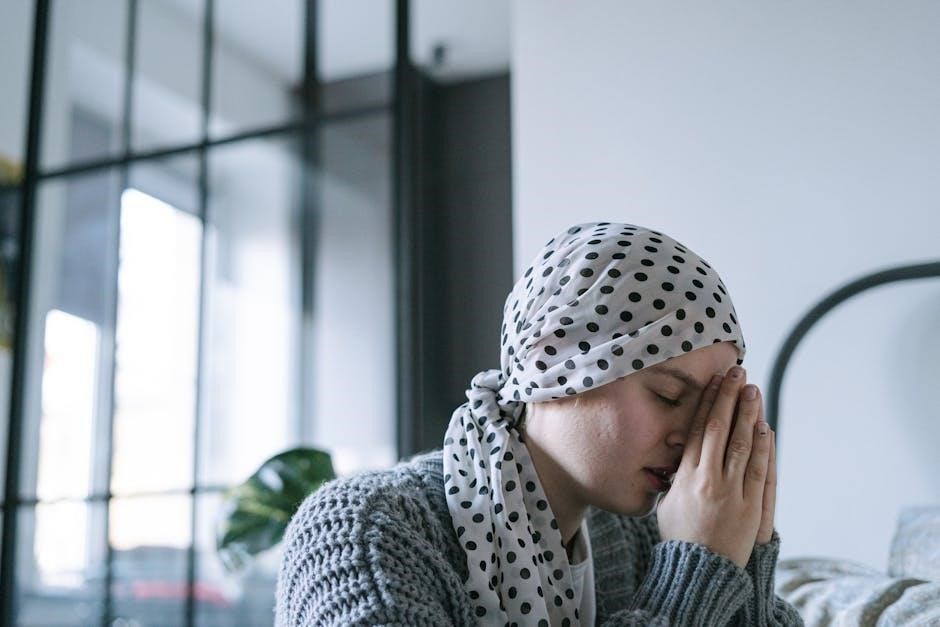
Rehabilitation Goals and Outcomes
The primary goals of hip ORIF rehabilitation include restoring functional mobility‚ reducing pain‚ and improving strength and range of motion. Outcomes often show significant progress in achieving these objectives‚ with studies indicating improved functional performance and quicker recovery when advanced therapies like whole-body vibration are incorporated.
5.1. Restoring Range of Motion and Strength
Restoring range of motion and strength is a cornerstone of hip ORIF rehabilitation. Early mobilization with gentle exercises‚ such as heel slides and wall slides‚ helps prevent stiffness. Progressive resistance exercises‚ including isometric and resistance band workouts‚ are introduced to rebuild hip muscle strength. Weight-bearing activities are gradually incorporated to enhance functional mobility. The goal is to achieve pre-injury strength and flexibility‚ ensuring the hip joint stabilizes effectively. Regular assessment of progress ensures tailored adjustments to the therapy plan‚ promoting optimal recovery outcomes.
5.2. Improving Functional Mobility and Balance
Improving functional mobility and balance is critical for regaining independence post-surgery. Physical therapy incorporates exercises like single-leg stands‚ balance boards‚ and wobble cushions to enhance stability. Gait training with assistive devices ensures safe ambulation. Patients progress to unsupported activities‚ such as walking on uneven surfaces‚ to mimic real-world challenges. Strengthening core and lower limb muscles further supports balance. Customized exercises address individual deficits‚ fostering confidence and reducing fall risks. The ultimate goal is to restore coordination and mobility for daily activities and long-term functional independence.

Exercise and Activity Progression
A structured approach to advancing exercises and activities‚ tailored to the patient’s recovery stage‚ ensures gradual improvement in strength and function. Progression focuses on safely transitioning from basic movements to complex tasks‚ supporting overall recovery and functional goals.
6.1. Weight-Bearing and Non-Weight-Bearing Exercises
Weight-bearing and non-weight-bearing exercises are tailored to promote healing and restore function. Initially‚ non-weight-bearing exercises‚ such as aquatic therapy or cycling‚ minimize stress on the hip joint. Progression to partial weight-bearing with crutches or walkers supports controlled loading. Full weight-bearing is introduced gradually‚ focusing on proper gait mechanics. These exercises aim to enhance mobility‚ strength‚ and balance‚ ensuring a safe transition to normal activities while preventing complications.
6.2. Proprioceptive and Strengthening Exercises
Proprioceptive exercises enhance joint stability and balance‚ reducing the risk of falls. Activities like single-leg stands‚ wobble board training‚ and mini-trampoline work improve sensory feedback. Strengthening exercises target hip abductors‚ glutes‚ and quadriceps to restore muscle function. Progression includes resistance bands‚ weight-bearing exercises‚ and dynamic movements. These exercises promote functional recovery‚ enabling patients to return to daily activities and sports safely. Proper form and gradual intensity adjustments are crucial to avoid overloading the hip joint during rehabilitation.
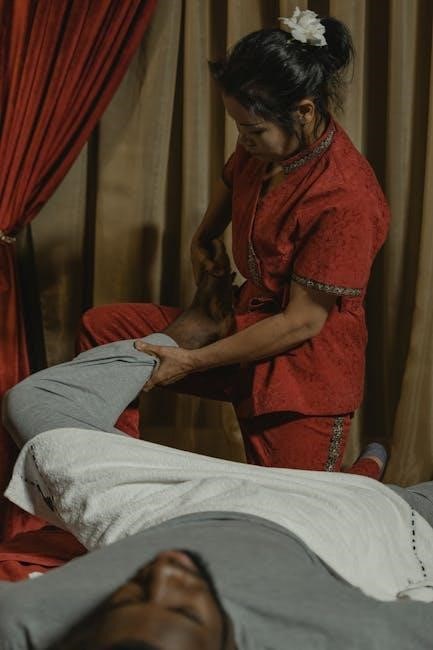
Pain Management Strategies
Pain management combines analgesics‚ anti-inflammatory medications‚ and physical therapy modalities to reduce discomfort‚ ensuring patient comfort and adherence to rehabilitation protocols.
7.1. Use of Analgesics and Anti-Inflammatory Medications
Analgesics and anti-inflammatory medications are crucial in managing postoperative pain and inflammation. Opioids‚ such as oxycodone‚ are often prescribed for acute pain‚ while NSAIDs‚ like ibuprofen‚ reduce swelling. These medications are typically used in the early stages of recovery to improve patient comfort and enable participation in physical therapy. However‚ their use is carefully monitored to avoid dependency and side effects. The goal is to balance pain relief with functional progress‚ ensuring patients can engage in rehabilitation activities effectively without overreliance on medication.
7.2. Modalities for Pain Relief in Physical Therapy
In physical therapy‚ various modalities are employed to alleviate pain and enhance recovery. Ice and heat therapy are commonly used to reduce inflammation and relax muscles. Ultrasound therapy can promote tissue healing and reduce discomfort. Electrical stimulation‚ such as TENS‚ helps manage pain and improve muscle activation. These modalities are often combined with exercises to optimize pain relief and support the patient’s ability to participate in rehabilitation activities effectively.
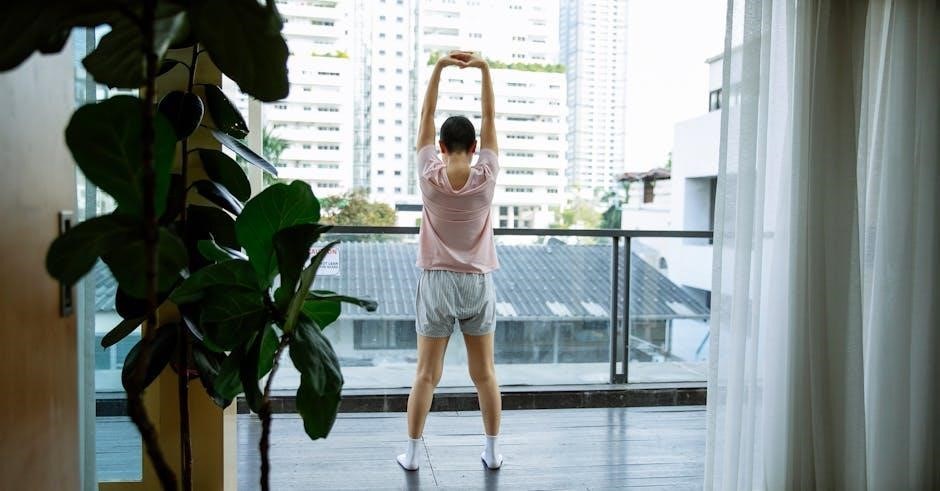
Wound Care and Infection Prevention
Wound care focuses on monitoring surgical sites for infection signs‚ proper dressing changes‚ and maintaining hygiene. Patient education on wound management and adherence to follow-ups are crucial.
8.1. Monitoring for Surgical Site Infection
Monitoring for surgical site infection involves regular inspection of the wound for signs of redness‚ swelling‚ warmth‚ or drainage. Patients should report fever‚ chills‚ or increased pain. Daily wound checks by healthcare providers ensure early detection. Proper hygiene practices‚ such as handwashing and sterile dressing techniques‚ are emphasized. Timely intervention can prevent complications‚ ensuring a smooth recovery process and reducing the risk of infection-related setbacks during physical therapy.
8.2. Proper Wound Dressing Techniques
Proper wound dressing techniques are crucial for promoting healing and preventing infection. Use sterile materials to cover the surgical site‚ ensuring the dressing remains dry and securely in place. Avoid tight dressings that may restrict blood flow or movement. Regular dressing changes‚ as prescribed‚ help monitor healing progress. Patients should be educated on proper wound care to maintain a clean environment and recognize signs of infection. This approach minimizes complications and supports optimal recovery during physical therapy.
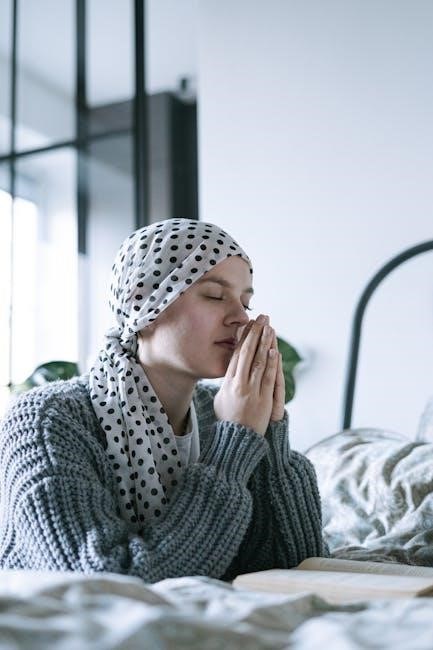
Role of Assistive Devices
Assistive devices like crutches‚ walkers‚ and canes are essential for mobility post-surgery‚ providing stability and reducing strain on the hip during the healing process.
9.1. Use of Crutches‚ Walkers‚ and Canes
Crutches‚ walkers‚ and canes are critical for postoperative mobility‚ allowing patients to avoid placing weight on the operated hip. These devices provide stability‚ reduce strain‚ and prevent complications during healing. Patients are typically fitted with crutches or a walker immediately after surgery‚ progressing to a cane as strength and balance improve. Proper training on device usage is essential to ensure safety and effectiveness. The goal is to transition to independent ambulation while minimizing the risk of falls or further injury.
9.2. Transitioning to Independent Ambulation
Transitioning to independent ambulation focuses on weaning off assistive devices when the hip is stable and strong enough. Criteria for transition include adequate strength‚ balance‚ and pain control. Patients progress from two crutches to one‚ then to a cane‚ and finally to unassisted walking. Gait training emphasizes proper weight-bearing and movement patterns. Therapists assess readiness‚ ensuring safety and confidence. The goal is to achieve independent walking without compromising hip stability or risking reinjury‚ promoting full functional recovery and mobility.

Complications and Their Management
Hip ORIF complications include infection‚ hardware failure‚ and nonunion. Management involves antibiotics‚ revision surgery‚ and modified rehabilitation protocols to address issues while promoting recovery.
10.1. Common Postoperative Complications
Common postoperative complications after hip ORIF include infection‚ hardware failure‚ and nonunion. Infection risks are higher due to surgical site exposure. Hardware failure‚ such as screw loosening or plate fracture‚ can occur under stress. Nonunion‚ where the bone does not heal properly‚ may require revision surgery. Additionally‚ complications like wound dehiscence or deep vein thrombosis can arise. Early identification and management are critical to prevent long-term functional limitations and ensure successful rehabilitation outcomes. Monitoring and addressing these issues promptly is essential.
10.2. Addressing Adverse Events in Therapy
Addressing adverse events in therapy requires prompt identification and intervention. Common issues include increased pain‚ swelling‚ or limited mobility. Immediate actions involve stopping the aggravating activity and reassessing the patient. Interventions may include pain management modalities‚ ice therapy‚ or ultrasound. Adjusting the therapy plan to avoid exacerbation while maintaining progress is crucial. Collaboration with the surgical team ensures comprehensive care. Patient education on activity modification and symptom monitoring is essential to prevent setbacks and promote a safe recovery environment.
Emerging Trends in Hip ORIF Rehabilitation
Emerging trends in Hip ORIF rehabilitation focus on technology integration‚ personalized therapy plans‚ and alternative therapies to enhance recovery and patient outcomes effectively.
11.1. Whole-Body Vibration Therapy
Whole-body vibration therapy is emerging as a promising tool in hip ORIF rehabilitation. It involves standing or performing exercises on a vibrating platform to stimulate muscle contractions. This therapy enhances neuromuscular activation‚ improving strength and balance. For hip ORIF patients‚ it can help restore muscle function around the hip joint post-surgery. The vibrations also promote blood flow and reduce inflammation‚ aiding in faster recovery. Studies suggest it may minimize muscle atrophy and improve proprioception‚ making it a valuable adjunct to traditional physical therapy exercises.
11.2. Aquatic Therapy for Hip Rehabilitation
Aquatic therapy is a low-impact‚ water-based rehabilitation method that benefits hip ORIF patients. The buoyancy of water reduces joint stress‚ allowing for pain-free movement and strengthening. It enhances flexibility‚ improves gait patterns‚ and boosts cardiovascular fitness. Aquatic exercises‚ such as underwater treadmill walking and resistance movements‚ promote hip stability and strength without the risk of falls. This modality is particularly effective for patients with limited mobility‚ accelerating recovery and improving functional outcomes in hip rehabilitation protocols.

Patient Education and Compliance
Patient education empowers individuals to understand their recovery process‚ fostering active participation and compliance with effective therapy protocols‚ promoting optimal outcomes in hip ORIF rehabilitation.
12.1. Importance of Adherence to Therapy Protocols
Adherence to therapy protocols is crucial for optimal recovery in hip ORIF rehabilitation. Consistent participation ensures proper healing‚ prevents complications‚ and maximizes functional outcomes. Patients who follow prescribed exercises and guidelines often achieve faster recovery times and better long-term results. Compliance also reduces the risk of setbacks‚ such as decreased mobility or strength imbalances. By prioritizing adherence‚ patients lay a strong foundation for successful rehabilitation and improved quality of life post-surgery.
12.2. Patient Empowerment Through Education
Patient empowerment through education is vital for successful hip ORIF rehabilitation. Educating patients about their condition‚ treatment‚ and recovery process fosters active participation and confidence. Clear communication about exercises‚ expectations‚ and milestones reduces anxiety and fear. Empowered patients are more likely to perform exercises correctly‚ adhere to protocols‚ and achieve better outcomes. Continuous education and support enable patients to take control of their recovery‚ promoting independence and long-term success.
Long-Term Recovery and Return to Function
Long-term recovery focuses on restoring normal hip function‚ improving mobility‚ and enabling patients to resume daily activities and work or sports by 6-12 months post-surgery.
13.1. Expectations for Full Recovery
Full recovery after hip ORIF surgery typically takes 6-12 months‚ with most patients achieving significant improvement in pain‚ strength‚ and mobility. Patients can expect to return to normal daily activities‚ with many resuming sports or heavy work by 12 months. Recovery varies based on age‚ pre-injury function‚ and adherence to rehabilitation protocols. Full recovery involves restoring pre-injury hip function‚ eliminating pain‚ and regaining normal gait mechanics. Long-term outcomes are generally excellent‚ with minimal residual limitations in most cases.
13.2. Strategies for Maintaining Hip Health
Maintaining hip health post-recovery involves regular exercise‚ proper posture‚ and avoiding high-impact activities. Strengthening the glutes‚ quads‚ and core muscles supports hip stability. Weight management reduces stress on the hip joint. Low-impact activities like swimming or cycling promote mobility without overloading the hip. Patients should avoid prolonged sitting and adopt ergonomic practices. Regular follow-ups with healthcare providers ensure long-term joint health. Education on activity modification and proper movement techniques prevents recurrence of injury or degeneration‚ fostering lasting hip function and quality of life.
Successful hip ORIF recovery hinges on adherence to physical therapy protocols‚ ensuring restored function‚ strength‚ and mobility for optimal long-term outcomes and improved quality of life.
14.1. Summary of Key Points
Emerging trends‚ such as aquatic therapy and vibration therapy‚ further enhance recovery potential. Compliance and consistent effort are vital for achieving full functional recovery and preventing complications.
14.2. Future Directions in Hip ORIF Rehabilitation
Future advancements in hip ORIF rehabilitation may include personalized treatment plans using AI and machine learning to optimize recovery timelines. Robotics and wearable technologies could enhance precise monitoring and rehabilitation outcomes. Regenerative medicine‚ such as stem cell therapy‚ may improve soft tissue and bone healing. Virtual reality and telehealth platforms could expand accessibility and engagement in physical therapy. These innovations aim to accelerate recovery‚ reduce complications‚ and improve long-term functional outcomes for patients undergoing hip ORIF surgery.